- News
- Reviews
- Bikes
- Accessories
- Accessories - misc
- Computer mounts
- Bags
- Bar ends
- Bike bags & cases
- Bottle cages
- Bottles
- Cameras
- Car racks
- Child seats
- Computers
- Glasses
- GPS units
- Helmets
- Lights - front
- Lights - rear
- Lights - sets
- Locks
- Mirrors
- Mudguards
- Racks
- Pumps & CO2 inflators
- Puncture kits
- Reflectives
- Smart watches
- Stands and racks
- Trailers
- Clothing
- Components
- Bar tape & grips
- Bottom brackets
- Brake & gear cables
- Brake & STI levers
- Brake pads & spares
- Brakes
- Cassettes & freewheels
- Chains
- Chainsets & chainrings
- Derailleurs - front
- Derailleurs - rear
- Forks
- Gear levers & shifters
- Groupsets
- Handlebars & extensions
- Headsets
- Hubs
- Inner tubes
- Pedals
- Quick releases & skewers
- Saddles
- Seatposts
- Stems
- Wheels
- Tyres
- Health, fitness and nutrition
- Tools and workshop
- Miscellaneous
- Buyers Guides
- Features
- Forum
- Recommends
- Podcast
review
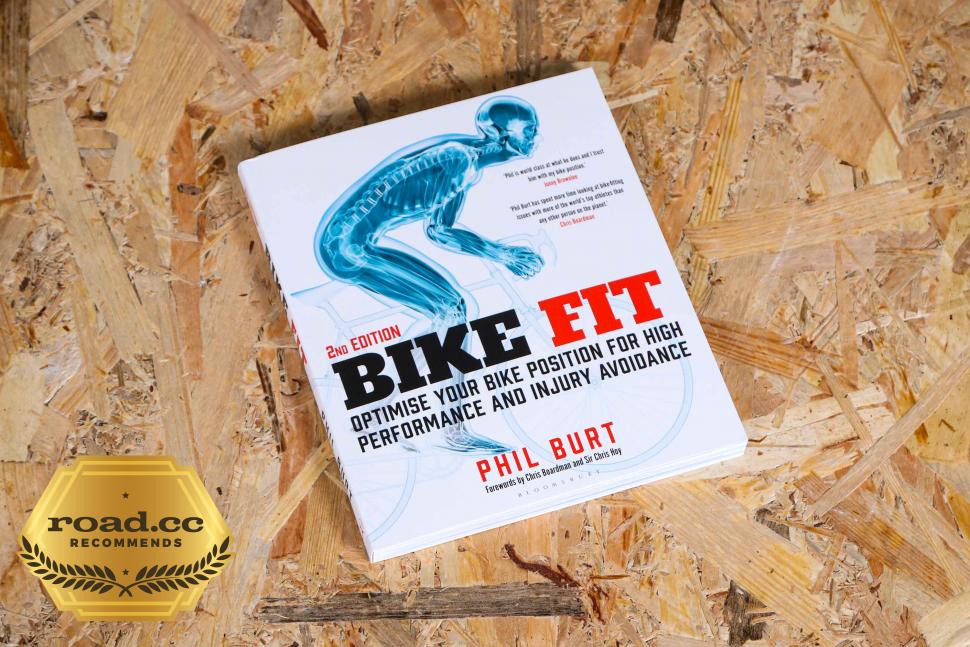 Bike Fit 2nd Edition by Phil Burt
Bike Fit 2nd Edition by Phil Burt£20.00
VERDICT:
A must-read for anyone interested in fettling their bike position to improve performance – however you define it
Clear and informative
Well structured
Broad; this is not just a book for elite racers
One or two questionable illustrations
Weight:
550g
Contact:

This product has been selected to feature in road.cc recommends. That means it's not just scored well, but we think it stands out as special. Go to road.cc recommends
At road.cc every product is thoroughly tested for as long as it takes to get a proper insight into how well it works. Our reviewers are experienced cyclists that we trust to be objective. While we strive to ensure that opinions expressed are backed up by facts, reviews are by their nature an informed opinion, not a definitive verdict. We don't intentionally try to break anything (except locks) but we do try to look for weak points in any design. The overall score is not just an average of the other scores: it reflects both a product's function and value – with value determined by how a product compares with items of similar spec, quality, and price.
What the road.cc scores meanGood scores are more common than bad, because fortunately good products are more common than bad.
- Exceptional
- Excellent
- Very Good
- Good
- Quite good
- Average
- Not so good
- Poor
- Bad
- Appalling
The second edition of Bike Fit by former Team Sky and British Cycling physiotherapist Phil Burt is a comprehensive, well-written and fascinating guide to one of the most important and often-overlooked subjects in cycling: getting the human body and this peculiar machine with a wheel at each end to best work together.
In 10 chapters over 200 pages, Burt covers the main topics and issues of bike fit in clear prose and with plenty of illustrations. Whether you're thinking about getting a bike fit, looking to fine-tune your position yourself or help out riding buddies, it'll give you a decent grounding in the way bike fitters think and work; 20 quid well spent.
History
Burt kicks off this edition with a bit of history, both his own, and the history of bike positioning. Since version one he's opened up his own bike fit studio in Manchester and that's brought him into contact with a much greater range of cyclists than the elite athletes he worked with at British Cycling. 'I've got a far wider experience and deeper understanding of cyclists across multiple disciplines, aspirations and backgrounds,' he writes.
In a brief section on more general history Burt discusses the influence of top riders of the past on the development of riding position, from Fausto Coppi and Jacques Anquetil through constant tinkerer Eddy Merckx to Bradley Wiggins; he points out that bike fit nostrums like 'saddle height = inseam times 0.883' don't work for everyone; and introduces the ideas of dynamic fit (tailoring the bike to a rider who's actually moving) and the bike fit window – the range of adjustments in which the rider will be able to ride comfortably and efficiently.
The bike fit window
Chapter three explores the bike fit window in a lot more detail and is full of useful advice that you can use yourself to tune your bike fit and riding position, covering topics from saddle height and angle to handlebar position and, perhaps most surprisingly, crank length.
For years average male riders have almost all used cranks that are 170-175mm long. Burt reckons we should be running 165mm cranks, and makes some compelling arguments based on scientific studies that show no significant difference in power output for cranks from 80mm to 320mm long. But shorter cranks have benefits in aerodynamics and comfort, he says, especially for riders with knee problems, but also for, well, everyone. Food for thought.
In chapter four, Burt discusses what he calls the three pillars of bike fit: aerodynamics, comfort and sustainability, and power. You'll prioritise these differently depending on the type of riding you're doing which is why the answer to 'Can you get my bike position right?' is 'For what?'.
For a track pursuit rider, aerodynamics and power are the priority and comfort takes a distant back seat; when you're chasing outright speed, being uncomfortable for four minutes is no big deal. At the other end of the scale, Burt says comfort is more important than power or aerodynamics for commuting cyclists. I'd say that depends where you're riding: comfy cruising is fine here in Cambridge, but if I'm doing the manic sprints between traffic lights that characterise London commuting, I'd likely optimise for power.
Nevertheless, this is a really useful point of view, and Burt emphasises the need to change position gradually to allow your body to adapt so you can achieve the goals you're aiming for.
Aches, pains and injuries
Chapter five deals with the aches, pains and injuries that can arise from poor fit, starting at your feet with shoe and pedal-position issues and working up to the neck and shoulders and forward to your hands. In effect this is a comprehensive checklist of things that can go wrong because of your riding position, and how to go about fixing them. Well, mostly anyway. One alarming anecdote Burt tells is of a rider who permanently damaged the nerves in his hands because a poor bike fit placed too much weight on them and who carried on riding an end-to-end thinking pain was just part of long-distance riding. The moral of the story: don't ignore pain, it's a signal something is awry.
If your focus is on all-out speed then you're probably racing time trials or triathlons and chapter six is for you. Burt stresses that aerodynamics is crucial to speed against the clock and rider position is crucial to aerodynamics. Eighty per cent of aerodynamic drag comes from the rider and only 20 per cent from the bike, so before you swap 50mm-deep wheels for 80mm jobs, you need to get your position right.
There's a lot of information in here that you can use to tune your time trial position, even if you can't afford wind tunnel time. This emphasis on practicality threads right through the book, but is perhaps most noticeable here because rider position is so vital for time trialling. If your position's a bit less than perfect for a sportive or club run, you can still have a good day out, but if you're chasing a 10-mile personal best, it needs to be as aerodynamic as you can achieve.
Staying indoors
Burt recommends using a turbo trainer to tune your time trial position, and performing mobility exercises to help you achieve and maintain it. In chapters seven and eight he deals with indoor training and off-the-bike exercises respectively.
As well as recommending a selection of stretches that'll help you achieve an efficient and comfortable position, he takes a few hundred words to fairly comprehensively debunk the notion of 'core strength', beloved of all sorts of fitness gurus. 'Apples have cores, cyclists don't,' he writes, adding that if you're already a frequent bike rider 'you're probably already able to ride your bike for multiple hours and perform the day-to-day tasks and movements that your non-cycling life involved. If this is the case, then the exercises that are typically prescribed for core strengthening will have little relevance or benefit to you.'
The case studies in chapter nine are worth a close read as you may well find a problem you've experienced here, and a possible solution. Burt deals here with numb hands, genital numbness, saddle soreness, adjusting to a time trial position and knee pain, among other things.
One that particularly resonates for me is the rider experiencing Achilles tendon pain after tackling some iconic French climbs. Been there, done that, to the point where I could hardly walk after several days in the Dolomites.
'Next time, build up longer sustained hill climbing before tackling such a big increase in loading,' Burt writes. Quite.
Finally, Burt takes you through the process of recording your bike setup so you can easily copy your position from one bike to another, which will be handy if you're buying a new bike or setting up a borrowed or hired bike.
If you're at all interested in the interface between bike and rider, this is a book that you should buy. Twenty quid is a bargain for what amounts to a brain dump from one of the UK's most knowledgeable people when it comes to the bike/rider interface.
Caveat
I'm not 100 per cent convinced you can do a bike fit entirely on your own. CycleFit's Phil Cavell once told me: 'You need a referee and that's our role.'
> Should you get a bike fit? The 9 pitfalls to avoid
To be fair, Burt doesn't quite claim a top-quality DIY bike fit is possible either. 'My goal with this book is to give all riders the knowledge to begin their own bike fit journey to evolve their position to support their cycling needs,' he writes in the introduction.
The key word there is 'begin'.
Approach it sensibly and what you will be able to get from this book is enough knowledge to know if your bike fit issues can be easily fettled or if you need a professional bike fit.
Who should buy this book?
Anyone who's considering getting a professional bike fit, or trying to set their bike up for improved performance – whatever 'performance' means to you. You may want to be faster against the clock, you may just want to to squash some niggling ache so you can ride for longer in comfort, you may be aiming to be quicker in rush-hour traffic.
If there's a bike setup solution for you, it's probably here and even if you don't execute it yourself, reading this book will arm you with very useful knowledge if you then decide to get a professional bike fit.
Verdict
A must-read for anyone interested in fettling their bike position to improve performance – however you define it
road.cc test report
Make and model: Bike Fit 2nd Edition by Phil Burt
Size tested: n/a
Tell us what the product is for and who it's aimed at. What do the manufacturers say about it? How does that compare to your own feelings about it?
Publisher Bloomsbury says:
The must read, bestselling guide to bike position for peak performance
Fully updated with the latest research and new material
Burning thighs and lungs aside, cycling shouldn't be a painful or uncomfortable experience. If you suffer from numb hands, hot-spots on your feet, back pain or saddle discomfort when you're riding, chances are something isn't right with your bike set-up, your body or how they interact.
But not all cyclists can afford a professional bike fit. This accessible manual contains all the information you need to find your perfect cycling position, revealed by one of the world's leading authorities on bike fit.
The fully updated second edition of this best-selling practical guide, takes you step by step through the Bike Fit process to ensure you maximise your cycling potential and includes brand new material on:
- Why almost all cyclists would benefit from shorter cranks
- An in-depth look at saddle health, with special attention and advice for female cyclists
- Watt-saving advice for time trialists and triathletes
- How to make indoor cycling more tolerable
Let Phil Burt guide you through your own bike fit with this must-read guide to get a performance advantage and ensure your bike and body work in harmony.
Phil Burt is the leading authority on bike fit. He was lead physiotherapist at British Cycling for 12 years through three Olympic cycles and was also consultant physiotherapist with Team Sky for five years. He has gone on to set up his own highly successful consultancy, Phil Burt Innovation, providing fits for countless cyclists and developing products with Sky for five years. He has gone on to set up his own highly successful consultancy, Phil Burt Innovation, providing fits for countless cyclists and developing products with the world's leading cycling brands.
Tell us some more about the technical aspects of the product?
Published 14 Apr 2022
Format Paperback
Extent 208
ISBN 9781472990181
Imprint Bloomsbury Sport
Dimensions 230 x 189 mm
Publisher Bloomsbury Publishing
Tell us what you particularly liked about the product
Generally clear and useful illustrations; clean and straightforward explanations.
Tell us what you particularly disliked about the product
Some illustrations are a bit random. For example there's a shot of a tool board on page 20 that includes tools (headset spanners, crank bolt spanners, a Mole Grip) that just aren't necessary on an enthusiast-level modern bike.
Did you enjoy using the product? Yes, it's a good read full of useful information.
Would you consider buying the product? Yes
Would you recommend the product to a friend? Yes
Use this box to explain your overall score
It's excellent. A really useful book.
About the tester
Age: 55
I usually ride: Scapin Style My best bike is:
I've been riding for: Over 20 years I ride: Most days I would class myself as: Expert
I regularly do the following types of riding: commuting, touring, club rides, general fitness riding, mtb,
John has been writing about bikes and cycling for over 30 years since discovering that people were mug enough to pay him for it rather than expecting him to do an honest day's work.
He was heavily involved in the mountain bike boom of the late 1980s as a racer, team manager and race promoter, and that led to writing for Mountain Biking UK magazine shortly after its inception. He got the gig by phoning up the editor and telling him the magazine was rubbish and he could do better. Rather than telling him to get lost, MBUK editor Tym Manley called John’s bluff and the rest is history.
Since then he has worked on MTB Pro magazine and was editor of Maximum Mountain Bike and Australian Mountain Bike magazines, before switching to the web in 2000 to work for CyclingNews.com. Along with road.cc founder Tony Farrelly, John was on the launch team for BikeRadar.com and subsequently became editor in chief of Future Publishing’s group of cycling magazines and websites, including Cycling Plus, MBUK, What Mountain Bike and Procycling.
John has also written for Cyclist magazine, edited the BikeMagic website and was founding editor of TotalWomensCycling.com before handing over to someone far more representative of the site's main audience.
He joined road.cc in 2013. He lives in Cambridge where the lack of hills is more than made up for by the headwinds.






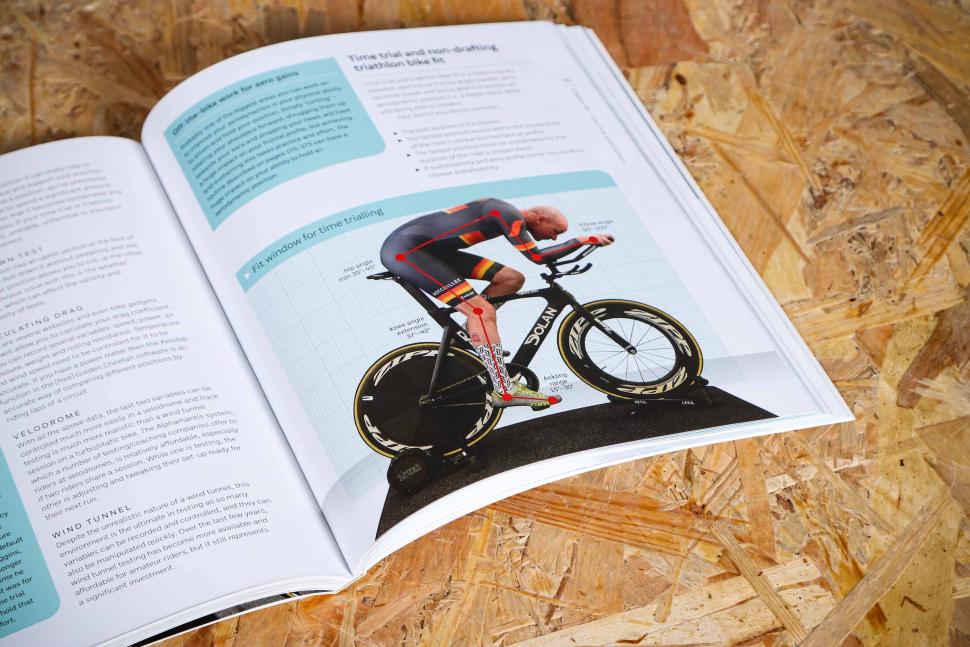
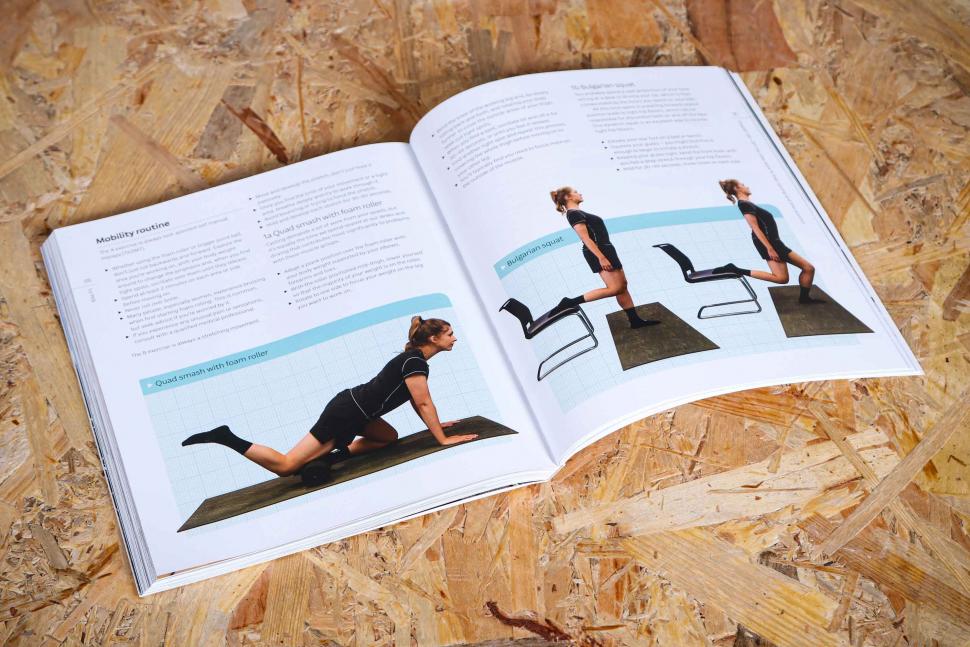
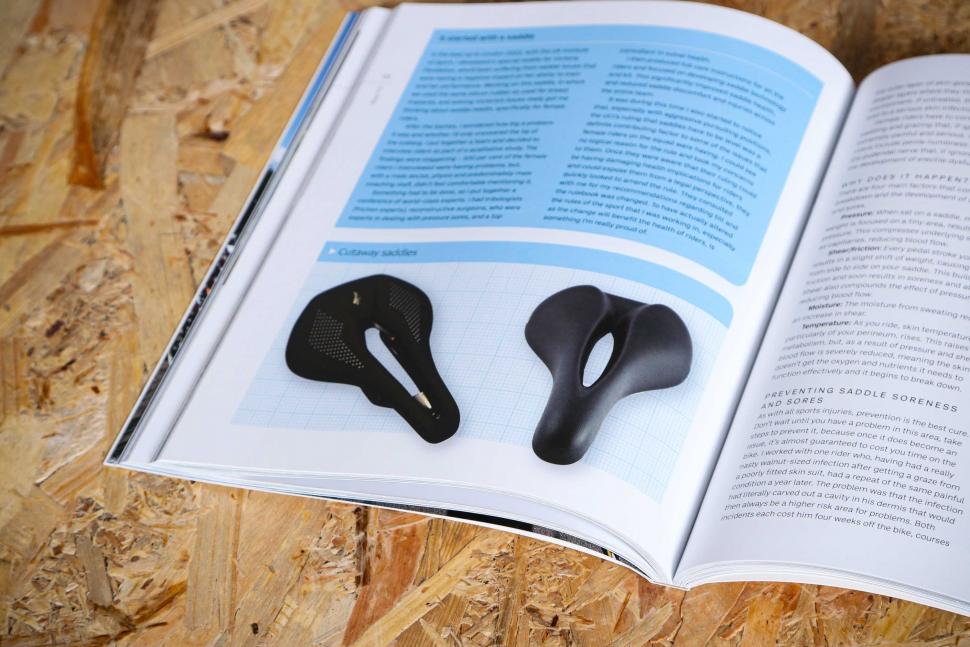


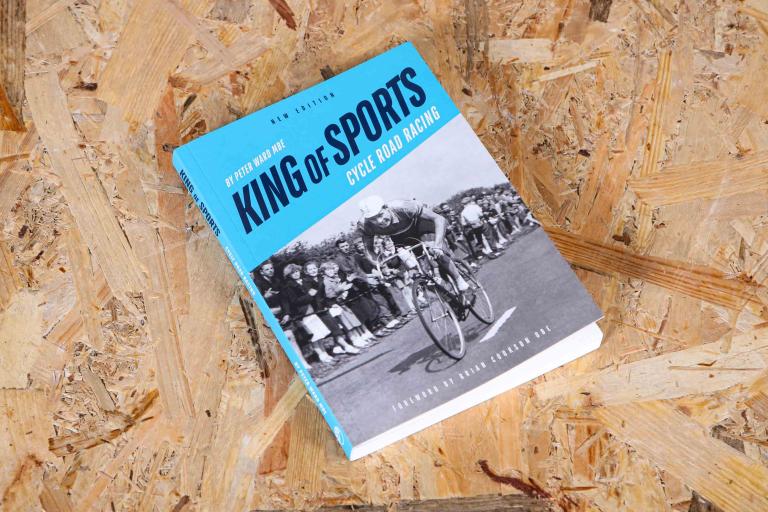
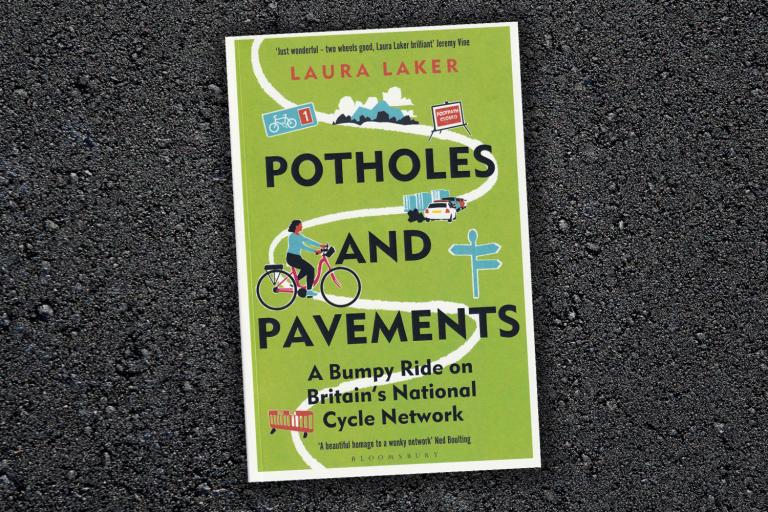
Yes, I agree, and thanks for replying, what I was trying to say (badly) was that Look wasn't really a bike company then. ...
It's only a few people at The Telegraph who are writing the anti-cycling rubbish (and at the other newspapers as well) there are about 6.5...
You never mentioned that a cyclist was stabbed to death by a pedestrian a few years ago in Richmond Park. Also when the park was left open...
Protesters telling us that a new cycle path will have devastating consequences on wildlife - motor vehicles are already doing that, but no protests...
Foxcote Hill in Ilmington - it's steep, it's not too long, and once you get to the top you can see the for miles across the Cotswolds....
well at least they didnt go for British Racing Green as well ,as then theyd have two trademark licensing cases up against them....
I think the best solution would be to automatically charge every driver who hits a cyclist on the road with attempted murder, and plain murder in...
Car crashes into front of home in Briggs Mead, Wymondham...
I've worked my way through a gifted box of these, and the review tallies exactly with my own experience.
Quite wrong. The really interesting stuff was good goggles for under £80 - my budget and I was previously limited to Tifosi. Had to ask about...